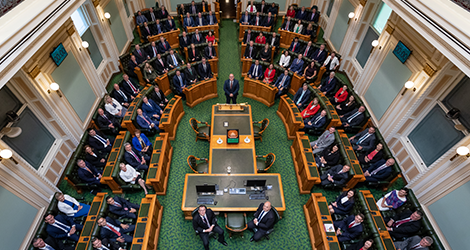Unlike healthcare and the pharmaceutical industry, the world of health and wellness apps does not have the same degree of regulation. Anyone can create one and load it onto an app store. There are currently thousands of mobile health apps and hundreds offering some sleep or relaxation feature, ranging from simple white noise tracks to apps that deliver cognitive behaviour therapy for insomnia (CBT-I).

Very few apps have been developed specifically for sleep disorders, such as insomnia, and only about one or two per cent of sleep apps have any form of robust clinical or scientific evidence to back them up. Many of those that have been tested have only been trialled on small groups, in nonclinical settings, or tested using randomised controlled trials.
In general, the functions in many sleep and relaxation apps fall into two types: ambient noise and relaxing sounds.
Ambient noise includes the range of ‘coloured’ noises – white, pink, brown, and mostly recently, green. All the coloured noises are varieties of static ranging from the original, higher-pitched white noise to the deep and rumbly brown noise. These may help to cover unwanted sounds like traffic or mask silence, and some people say they help them fall asleep and stay asleep if played throughout the night.
About 10 per cent of Australians – or 2.6 million people – have insomnia, making it by far the most common sleep disorder.
Relaxing sounds include gentle music, sounds recorded in nature and bedtime stories. Bedtime stories are usually nothing too exciting or stimulating, and are read in a slow, soothing way. Meditation for sleep is usually some form of paced breathing, sometimes accompanied by a mindfulness exercise like a body check. One of the underlying causes of insomnia is presumed to be hyperarousal, and relaxing sounds or breathing exercises may help to reduce this.
There is little real scientific evidence that either ambient noise or relaxing sounds will help you get a better night’s sleep, but if you find something that you like and feel works for you, then by all means continue to use it.
What is insomnia and how is it treated?
At some point in our lives, we will all have periods of poor sleep due to factors including physical or mental health problems, stress, financial or other worries, having young children or doing shift work. About 40 per cent of people report experiencing disturbed sleep patterns, but there is a difference between this and clinically diagnosed insomnia disorder.
About 10 per cent of Australians – or 2.6 million people – have insomnia, making it by far the most common sleep disorder. Insomnia is defined as repeated bouts of sleeping poorly, usually with a physical or mental trigger such as an illness or a period of stress. It is usually associated with negative beliefs about sleep, and this can cause anxiety about sleeping, creating a vicious cycle. Women in their forties and fifties are at high risk of insomnia.
There are different subtypes of insomnia disorder: trouble falling asleep (sleep onset insomnia), trouble staying asleep (sleep maintenance insomnia), and waking too early, which mostly affects older people. A common feature of insomnia is the feeling of being ‘wired and tired’ when trying to sleep, and it will be familiar to many as the 3am wake-up where your mind feels like it is racing.
Most people who seek assistance for insomnia do so from their GP, whose options are usually limited to recommending relaxation strategies and/or prescribing medication. We know that sleeping pills are not an effective long-term option, as they can result in dependence and do not address the root cause of the problem.
Because of this, it is common for someone with insomnia to simply accept that they sleep poorly and believe there is nothing to be done about it, but nothing could be further from the truth.
A proven treatment for insomnia
Cognitive behavioural therapy for insomnia (CBT-I) is a clinically proven remedy for insomnia.
CBT-I helps people modify their bedtime routine and schedule, and delivers therapy aimed at challenging and changing their negative beliefs about sleep. Psychologists can deliver CBT-I, but there simply aren’t enough psychologists to deal with the magnitude of the problem. There are online courses available to deliver CBT-I, and clinically tested and proven apps, but face-to-face therapy could become more accessible if doctors and nurses were trained to deliver it.
There are other new types of therapy in development that have yet to go through full clinical testing but that may help fight insomnia in the future. For example, acoustic stimulation involves playing a specific tone during slow-wave sleep. Slow-wave sleep, also known as deep sleep, plays a crucial role in memory and restoration, and has a role to play in healthy brain ageing and cognitive decline. Acoustic stimulation is cutting-edge scientific research, but the early indications are it that in years to come, it could be used to treat sleep maintenance insomnia.

Help is available: Associate Professor of sleep health Christopher Gordon says cognitive behavioural therapy for insomnia (CBT-I) is a clinically proven remedy.
Sleep is one of the three key pillars of health, along with diet and exercise, but it is the one we know the least about. We certainly don’t pay enough attention to it. When any of the three pillars is out of balance, your health suffers. For instance, sleeping less than six hours a night consistently can contribute to physical and mental health problems including cardiovascular disease, poor memory and cognitive decline. Luckily, good sleep habits are something we can all learn, even if we have suffered from insomnia in the past.
Top tips for better sleep
- Quarantine your bedroom for sleep and intimacy only to help you associate your bed with sleep and nothing else. Do all other activities elsewhere, especially working from home and watching television, and charge your smartphone in another room.
- Take your ‘sleep hygiene’ seriously. Avoid highly stimulating activities just before bed, including exercise, eating a heavy meal, and drinking anything containing alcohol or caffeine. Establish a regular bedtime, and a wind-down routine that you perform every night in the 30 to 60 minutes before bed. This might include dimming the lights and engaging in activities that are relaxing such as reading a book.
- Bright light at night inhibits the release of melatonin, the ‘dark hormone’ that helps us sleep. Avoid bright screens before bed, especially those like smartphones and computers that emit blue light; if you are using a screen, turn on the blue light filter.
- Create a good environment to sleep by making sure your bedroom is dark, quiet and at a comfortable temperature, preferably on the cool side as this helps to promote sleep.
- If you wake in the night and can’t go back to sleep for more than 15 minutes, get up and reestablish your pre-sleep routine, then come back to bed again when you feel sleepy.
- When you wake in the morning, try and get straight out of bed and catch some morning sunlight, ideally combined with some form of exercise. Sunlight is important to train our circadian rhythms, which tell us to stay awake during the day and sleep at night; exercise also aids sleep.
Christopher Gordon is an Associate Professor of sleep health at Macquarie University and a Research Leader at the Woolcock Institute of Medical Research, Australia’s leading sleep research centre.





